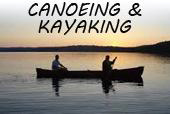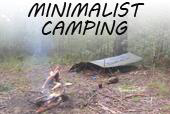Look out from the main parking lot of the St. Mary Lodge & Resort, located at the East entrance of Glacier National Park in Montana, and behold one of the largest intact ecosystems in the lower 48 states. Glacier National Park encompasses 1.4 million acres (1,600 square miles) of wildlife preserves and offers some of the most breathtaking scenery imaginable.
William Howard Taft was U.S. President when the area was officially declared a National Park in 1910, but its history goes back 170 million years before then. Colliding continental plates, massive glacier movement, and natural erosion all joined hands to create this wonderful monument to the forces of nature.
Although tourists began visiting back in the late 1890s, archeological evidence indicates that the land was inhabited by humans as far back as 10,000 years ago. Home to the Blackfoot and Kootenai Native American tribes, there are areas in the Park which are still considered to be sacred grounds.
About The Ecosystem
Glacier National Park offers a simultaneous view into pre-historic times and modern flora and fauna.
Most of the rocks formations are from the Proterozoic age which ranged from 1,600 to 800 million years ago. Although rock formations of that age found in other parts of the world have been radically changed by the Earth’s natural aging process, those in Glacier National Park still bear most of their original characteristics. This provides a wealth of information to geologists and some very unique experiences for tourists.
These ancient rock formations are home to fossils including stromatolites, a species of algae that inhabited the warm shallow seas that pre-dates the Rocky Mountains which are part of the Park. The fact that these fossils have survived makes the Glacier National Park a living classroom for scientists studying the evolution of Earth.
Of course, it’s the glaciers that give Glacier National Park its name. These glaciers are thought to be only a few thousand years old, making them relatively young compared to the overall timeline of the Park.
Climate change is impacting the Glaciers and causing them to shrink as more snow melts during the warm season than forms in the cold season. But when the Glaciers were active, they filled the valleys with moving currents of ice which sculpted the mountain ranges you see today.
A Sea Of Wildflowers
The glacier movement combined with other natural erosion forces left behind fertile soil. That’s why Glacier National Park is inhabited by an array of plants, trees and wildflowers including larch, spruce, fir, western cedar and pine trees, as well as heather, gentian, beargrass, glacier lily, pasque flower, lupine, Indian paintbrush, gaillardia, asters, and other wildflower species.
An Abundance of Wildlife
One of the contributing factors to Glacier National Park’s designation as being one of the largest intact ecosystems in the lower 48 States is the fact that there are so many species of wildlife calling the Park home. From the endangered American Bald Eagle to the Western Jumping Mouse, nowhere else in North America brings together so many wildlife species.
Glacier National Park’s biggest wildlife attractions include Lynx, Mountain Lion, Black and Grizzly Bear, Bison and Wolves representing but a few of the 272 species of birds and 63 mammal species found there.
Lakes of Glacier National Park
Framed by the Park’s legendary mountain peaks, Glacier National Park is home to over 700 lakes including 650 named lakes. One of the largest lakes of Glacier National park is St. Mary Lake, home to St. Mary Lodge & Resort. The largest glacier-formed lake is McDonald Lake, situated 3,153 feet above sea level on the Park’s Western portion and West of the Continental Divide. The lake is 10 miles long with depths ranging to 427 feet. Its shimmering water led to it being called “Sacred Dancing Lake” by the Native American Kootenai tribe.
Over 500 creeks and streams are also located in Glacier National Park as well as plenty of water falls. All in all, Glacier National Park is covered by 2,000 acres of water.
With this abundance of water, it makes sense that Glacier National Park is also home to a great many species of fish as well. The most abundant species include cutthroat trout, ling, northern pike, whitefish, kokanee salmon, grayling, rainbow trout, lake trout and the protected bull trout.
You Can See It All In One Place
Go ahead. Plan your next vacation to Glacier National Park, one of the largest intact ecosystems in the lower 48 states. You’ll be glad you did!












